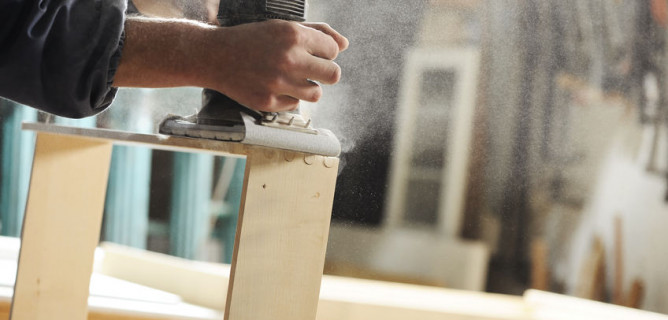 Green living not only helps the environment, it helps your pocketbook. When making upgrades to your home – whether it’s replacing a light bulb or a total living room makeover – incorporate energy-efficient and repurposed materials to make your living space more environmentally friendly.
Green living not only helps the environment, it helps your pocketbook. When making upgrades to your home – whether it’s replacing a light bulb or a total living room makeover – incorporate energy-efficient and repurposed materials to make your living space more environmentally friendly.
Emily J. Reynolds, an interior design faculty member at The Art Institute of Raleigh-Durham, a campus of South University, encourages green living through reuse of existing materials.
“There is a special feeling you get when you see a piece of furniture by the side of the road, fix it up, and put it to use again,” she says.
Reynolds locates used furniture at resale stores including Goodwill and the Salvation Army, or at yard sales. “When you are searching for furniture, know that it does take a little patience to find the right piece.” Reynolds says it’s important to pay special attention to the form of the piece and to look for high quality construction.
If refinishing pieces sounds like too much work, professionally restored furniture is also available and fits in with today’s trend toward distressed looks in furniture.
“Prices are often much lower for these pieces than if you purchased brand new pieces, plus you cut down on the negative effect of transporting new furniture to your doorstep,” Reynolds says.
Reusing old pieces also fits into the current trend toward eclectic interior design. “Pieces of different styles can be mixed in imaginative ways to create a harmonious space,” according to Reynolds.
When updating your home on a smaller scale, little changes can make a big difference, according to Sofeeka Hasiuk, one of the interior design faculty at The Art Institute of Philadelphia. “For instance, use no-VOC (volatile organic compound) paints for walls, furniture, or accessories,” she says. This keeps potentially harmful chemicals from getting into the air and into your lungs.
Shine the light on your green living space with LED arrays – an environmentally friendly alternative to traditional light bulbs. “They last longer and consume significantly less energy than incandescent bulbs,” says Hasiuk.
Other simple tips from the experts include:
- Use a programmable thermostat to increase energy efficiency. This will have a positive impact on the environment and on your wallet.
- Replace traditional cleaning products with eco-friendly products or baking soda, lemon juice or vinegar. Plus they cost a lot less.
- Choose sustainable hardwood or tile flooring over wall-to-wall carpeting. They last longer and are easier to clean.
Once your home is greener, keep the trend going. As you purge pieces from your collection, be sure to recycle them properly or donate them so that they may be used again. “Sell or donate those pieces so they can continue being used. Avoid placing items in the landfill if at all possible,” says Reynolds.
Follow Us on Facebook – Twitter – LinkedIn– Google Plus


